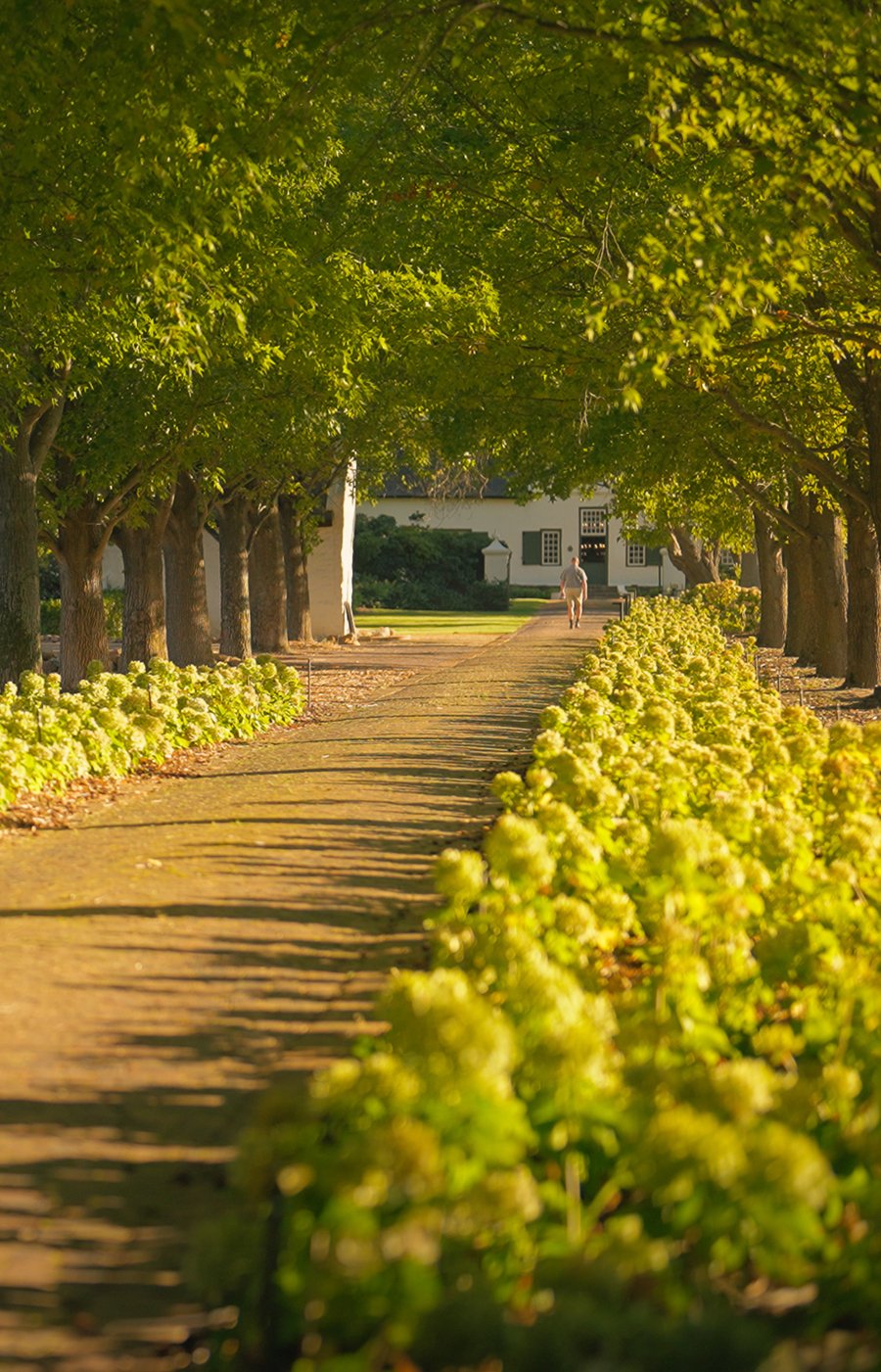Bottled Orchestra – The Resurrection of Quoin Rock
Rewind to less than a decade ago, and you’ll find the name Quoin Rock riddled with scandal and ill repute. But around 2015, the wine estate took a sudden turn when it produced a wine that competed with the very best that the Cape Winelands had to offer. Scarce three years earlier, the farm was bought on auction by Vitaly Gaiduk — hitherto unknown in the Winelands — a mysterious Ukranian steel magnate with big dreams of resurrecting the ailing farm to create one of the country’s top wineries.
Under the leadership of his son, Denis, Quoin Rock has excelled, and in a very short timeframe, has realised Vitaly’s vision. But that vision would have amounted to nothing had it not been for the quality of the wine. In this candid conversation with Denis Gaiduk and all-round viticultural and vinicultural specialist, Chris Keet, we get a unique insight into Quoin Rock’s journey with wine, and discover a success story bar none.
Quoin Rock had quite a troubled reputation. What was your vision for the new Quoin Rock, particularly the wine?
Chris Keet: I remember coming here in the old days, driving up and seeing the vineyards. There was quite severe stunted growth, and now, look at this…
Denis Gaiduk: My dad calls it a new haircut. I must be honest, we thought seriously about renaming the brand.
Chris: We started working with Nico Walters — one of the smartest viticulturists in the country — in 2012, to try and get the ship afloat, and at the same time, to swing it 180 degrees. It was really about going back to basics and saying, “Let’s get these vineyards into top-dollar condition.” So, then in 2015, these vineyards were looking pristine, and we launched our first wine under the new label, with new packaging, and new tasting facilities.
What is Quoin Rock’s wine philosophy?
Chris: In my opinion, the wines of the past were not reflective of the Simonsberg terroir, so that was our main priority; perfecting the true expression of this region — the perfect expression of fruit. We follow very traditional methods of winemaking. There’s no reason why an ancient cellar should produce an inferior wine, in my view, but technology helps. But knowing innately what to do, and when to pick, is something that comes with experience.
There are huge similarities between a winemaker and a chef, except for one difference; with wine, we’ve got one chance a year. Saying it all happens in the vineyard isn’t winemaking to me. Wine is 80% viticulture, 20% winemaking. Whatever happens in the vineyards is done with a very specific wine objective, tweaking the process to get the best wine.
Denis: In South Africa. In Europe, I’d say it’s the other way around. Their viticulture isn’t always that great, but their winemaking practices are exceptional. I’m generalising big time.
Chris: What I’ve noticed is that there, nobody knows who the winemaker is. They talk ‘brand’ a lot more in the top Chateaux. In South Africa, especially in the ‘90s, winemakers were like gods.
How would you describe Quoin Rock’s terroir?
Chris: On the Simonsberg, particularly with the Bordeaux varieties, one’s got this greenness* to the flavour of the wines. Quoin Rock grows on a very exposed slope on the Simonsberg, which results in very pronounced fruit flavours coming through.
* ‘Green’ doesn’t necessarily refer to green fruit flavours in wine, but rather to an underripe character, as if the grapes had been harvested too early, although one might also detect a green vegetable aroma or taste, like green bell pepper. This is particularly apparent in cooler climates or challenging vintages.
Denis: We’ve got two farms, or terroirs. Quoin Rock and Knorhoek (next door), which are on different sides of the same Simonsberg slope, and one in Elim, which is at Cape Agulhas.
Chris: It’s at the Southern tip of Africa, so it’s very cool. You get the most unbelievable restraint, so the whites are planted there; the Sauvignon Blanc, Semillon… You’ve got these completely different environments with the whites. The Sauvignons and the Chardonnays here have a more depth-of-fruit character, more fruit expression, more mid palate, more texture, where the wines made from Elim are like pillars in the blend — quite austere, firm, solid, with a delicious acidity — and then there’s that restrained fruit character, which is countered with a flinty minerality. In fact, when you look at the soils, you see this deep, decomposed shale, granite, quarts. They’re wines that should really be sold at five… ten years old. The combination of the two is where the magic lies.
Denis: Each wine we produce has its own message, so one will be a true reflection of this terroir; and another will be a reflection of that one… and then there will be another one which will be a reflection of both. So, it’s not about the terroir, but about the product, which is beautiful in the way it’s designed. I don’t like that philosophy of ‘a single block, a single vineyard’. It could be if you want that to be your message, but if you have the option of creating a really complex and amazing wine, why would you restrict yourself?
Chris: In the end it’s about the story. And it’s a beautiful story. On the one hand you’ve got a wine from the capital of the Winelands (Stellenbosch), and one from a completely different world. In Stellenbosch, it might be 35 °C, and then you go over the mountain and it’s 15 °C, drizzling, and the wind’s blowing, and the baboons are screaming, and there’s no traffic… it’s just unbelievable.
Quoin Rock is widely lauded for its blends. What is it that makes a blend so special?
Denis: You know, I gave our white blend to a top Italian sommelier recently and he loved it. Then I told him it had almost zero sale, and he was astounded. South Africans look down on blends, which is so sad, because the product is so unbelievably good. We had a lot of discussions about whether to kill it.
Chris: The red blends are far more established, locally and internationally, but the whites are a hard sell. When you’re dealing with blends, I like to compare them to an orchestra. You’ve got all these different varietals with their own little character — fruit flavours, tannin compositions, textures, acid levels — all of which play a key role in a well-constructed blend. They’re like musical instruments, and you’re always looking to create that perfect harmony.
Denis: But also a reflection of the conductor’s personality…
Chris: Without a doubt, because someone must still make the final call. That’s why we really try to farm these grapes to perfection, so that we’ve got pockets of such individuality that we can bottle them on their own.
Denis: The instrument is so good that it can play solo.
Chris: When that orchestra kicks in, you’ve got these layers of sound and complexity. When you taste the wine, every sip must be different, so you’ve got the Cabernet Sauvignon coming through; next sip, the Cab Franc is speaking to you with its peppery, spicy semantic; and then afterwards, ‘ey, this juicy, unctuous, dark fruit from the Malbec comes in with the Petit Verdot putting its little finger up, bringing freshness. So, that’s how you can layer a wine. Sometimes you want one variety to stand out more. That was the game plan with Quoin Rock from the beginning — from 2015 — to make sure that every wine is very considered and calculated. Because, in the end, that’s going to be the legacy of the wine; not the viticulturist, not the winemaker, but the Simonsberg fruit.
Denis: Two-hundred years down the line, Quoin Rock must reflect the location, the positioning… which is why, whatever we do here or in Elim, we’re building a base for generations to come. And that’s why, from the beginning, we tried not to restrict ourselves. What role must each wine play in the orchestra? Is it just noise, or does it have personality? It’s amazing how that Cab Franc played… it’s just that extra one percent, five percent that makes all the difference.















